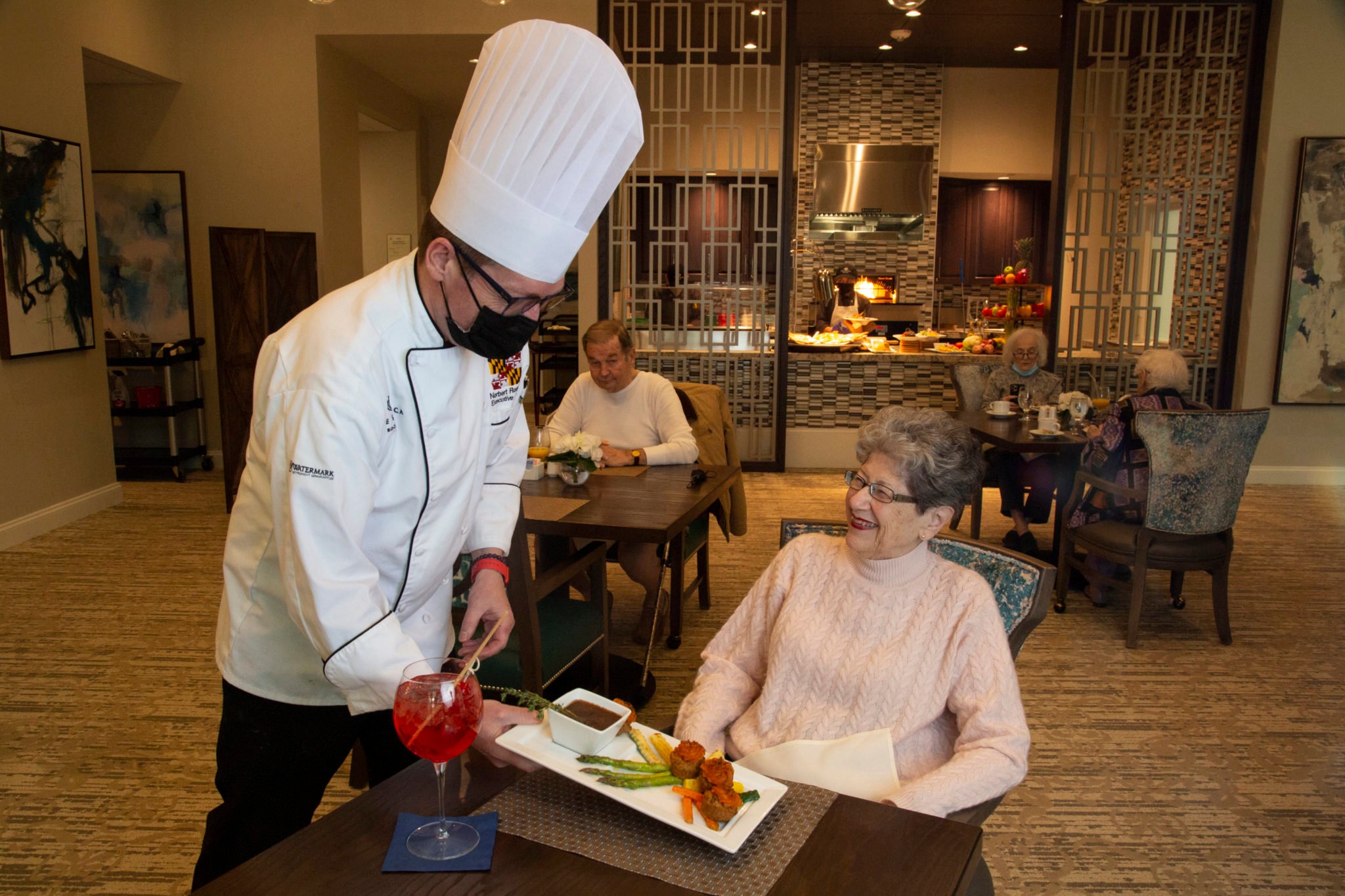The food is beautiful to look at, too.

In a culture as food-obsessed as ours, the inability to enjoy a delicious meal can be one of the cruelest indignities of aging. Which is why, about a decade ago, a pair of chefs in Atlanta named Sarah Gorham and Stone Morris devised a cooking method specifically for elderly people navigating neuromuscular, physical, and cognitive challenges, such as Alzheimer’s and other forms of dementia, which can make it tough both to swallow and to sit still through mealtime.
They’d been asked by a senior-living facility there to come up with meals that could restore some independence to memory-care residents. “Like any other innovation, it’s trial-and-error,” says Gorham. “We had a very forward-thinking company that was trying to do the right thing for their residents.”

The technique they came up with, called “grind dining,” takes favorite foods and reinterprets them in an easier-to-digest, handheld form, while retaining familiar textures and flavors. The results are often beautiful—nothing like puréeing, in which everything turns into blended-up mush. Take steak and potatoes: After the meat is ground, it’s mixed with gravy, then topped with duchess potatoes. The end product looks like a fancy, cupcake-shaped canapé that can be eaten in two bites, no fork or knife required.
The pilot program was so successful that the two women turned it into a business. Their method has since been deployed at assisted-living facilities across the country, including three Washington-area ones managed by Watermark, in Fairfax, Alexandria, and Rockville. Watermark introduced the program in 2015 and now trains all of its culinary staff in it. The facilities’ chefs take part in an immersive, ten-week program filled with cooking demonstrations and trainings on how to use special equipment. Gorham and Morris attend, too.

One benefit, says Jonathan Garber, executive director of Rockville’s the Seneca, is that the handheld portions allow residents to walk around the dining room while they eat. “It’s allowed our members to thrive, to feel the socialization,” he says, “and not to be shy about eating.”
The Seneca’s dining director, Jason Love, says there’s something in it for the staff, too: “We can actually embrace our creative culinary side and not be so rigid. In turn, our members end up actually blossoming.”
This article appears in the March 2022 issue of Washingtonian.

You must be logged in to post a comment.